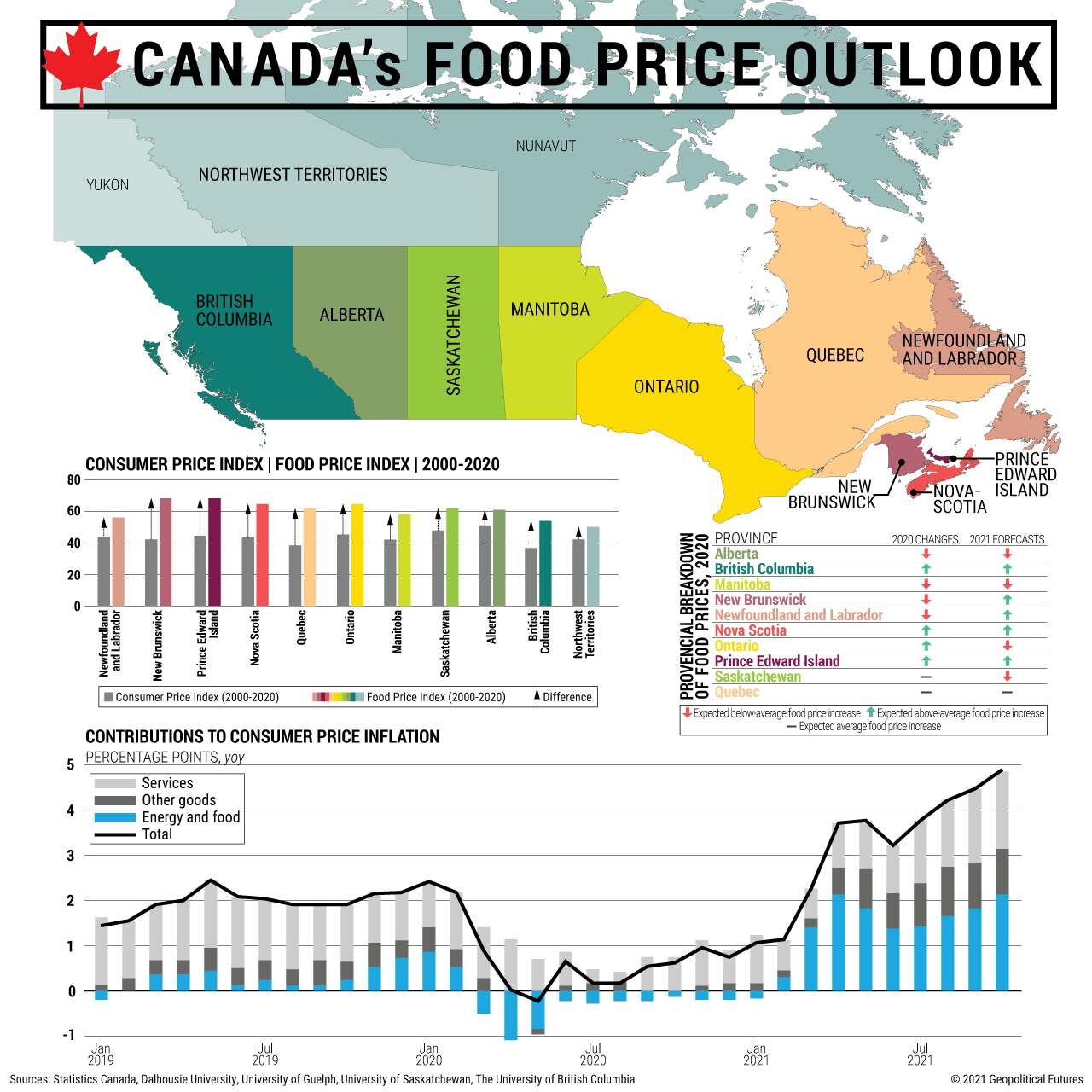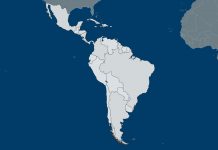
Canada is on a growing list of developed economies grappling with rising food prices. This year, the cost of food increased there by an average of roughly 3-5 percent. Meat and vegetables were particularly expensive, jumping by 4.5-6.5 percent. Expectations for 2022 are that prices will increase 5-7 percent. The price of dairy products and restaurant orders are expected to jump 6-8 percent, while baked goods and vegetables are projected to perform near the average (5-7 percent). Other staples such as fruit, meat and seafood will be below the average.
There is a variety of factors that contribute to this trend. Inputs like animal feed, energy, fertilizers, transportation and labor have become more expensive thanks to supply chain bottlenecks, bounce-back demand and pandemic-induced disruptions. Climatic factors – such as a drought in Canada, which will directly affect grain products and animal feed – are also at play. The Canadian government has programs in place to deal with food insecurity and, like other countries, will be closely paying attention to food accessibility and potential social or political problems being triggered as a result of higher food prices.






 Special Collection – The Middle East
Special Collection – The Middle East